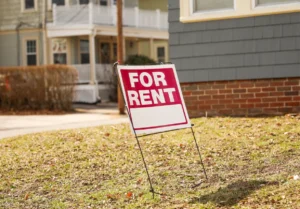Rent Control 101: Understanding the Basics
 As a landlord or property manager, “rent control” may not be the most positive term in the real estate industry. It basically puts constraints on how much control a landlord has over their property, specifically on how much rent they can charge tenants.
As a landlord or property manager, “rent control” may not be the most positive term in the real estate industry. It basically puts constraints on how much control a landlord has over their property, specifically on how much rent they can charge tenants.
However, it’s still important to understand rent control, how it affects the landlord, the tenant and rent increases, as well as its impact on rising rents. Keep reading and dive deeper into the world of rent control with our complete guide:
What is rent control?
Rent control places a limit on how much a landlord can charge their tenants in their lease and lease renewal. It’s implemented by government programs in key municipalities across the U.S. to help maintain affordable living costs for lower-income residents. Each location has its own different requirements and details regarding rent control.
However, it’s important to note that rent control isn’t applied everywhere in the U.S. Instead, it’s mainly in municipalities with limited housing, such as California, Maryland, New Jersey, New York, Oregon or Washington, D.C. In 2019, both California and Oregon signed statewide rent control laws. In Oregon, the law limits annual rent increases to 7% and the increase in the consumer price index (basically, add inflation). Each of these locations has rising living costs, and rent control attempts to make it easier to find available, low-cost housing.
Meanwhile, according to the National Multifamily Housing Council (NMHC), about 31 states have enacted laws that preempt or forbid rent control measures from being implemented.
With rising living and housing costs throughout the U.S., there have been increased rent regulation discussions brought to the table — especially in highly-populated areas with plateaued wages.
Rent control vs. rent stabilization
Rent control and rent stabilization are often used interchangeably in real estate. Yet, they do mean different things historically.
Originated in the 1920s, rent control originally meant that a tenant’s rent is set at a specific number that will not change for an indeterminate amount of time. It’s technically “frozen.” This is extremely rare and doesn’t apply to most modern landlord and tenant situations.
In contrast, rent stabilization refers to a government-set percentage that affects how much a landlord can increase monthly rent per year. This term first appeared around the 1970s and is what people generally refer to when they mention “rent control.”
For the purposes of this article, rent control and related laws refer to rent stabilization, which is the current understanding of the term.
An example of rent control
One of the prime examples of rent control programs exists in New York City. Just like San Francisco, New York City is extremely populated with limited housing. With a continual increase in demand and low supply, housing costs rise rapidly, so rent control programs are formed to combat this struggle.
New York City has two rent control programs. One is the original program, created by the New York City Rent Guidelines Board, that only affects renters that have been residing since 1974 or before in buildings that were constructed prior to 1947. However, this program is being phased out and doesn’t impact the majority of renters in the city.
The other is a rent control program that was enacted in the 1970s to stabilize and regulate rent prices. It dictates that rent can only be increased for either one or two years by a percentage set by the Rent Guidelines Board. Many more rental units are affected by this program and are what most people think of when they consider New York City rent-controlled housing.
Rent control laws in the U.S.
Rent regulation is determined by each state, rather than by federal law. As of 2019, only Oregon and California have passed statewide rent control laws. If you own rental property in these states, it’s recommended that you contact a legal professional or expert to familiarize yourself with any applicable rent control laws. This can help landlords ensure they’re following all legal requirements with regard to their rental properties.
States that have localities with residential rent control laws include:
- California
- New York
- New Jersey
- Maine
- Maryland
- Minnesota
Meanwhile, in Washington, D.C. there are rent control laws that affect some rental units. However, these laws do not affect the following properties:
- Publicly owned or assisted properties
- Properties built in 1978 or later
- Properties rented by a property owner with fewer than five units
How does rent control impact landlords?
Rent control is a controversial subject — especially for landlords. On the one hand, it mainly affects lease renewals, which does guarantee that a rental unit stays occupied with long-term tenants. This can help foster beneficial landlord-tenant relationships because the tenant will probably commit to the unit for the foreseeable future and pay rent on time to avoid eviction.
On the flip side, it’s difficult for landlords who want to keep rent prices competitive within the market. It’s a limiting factor that adds extra government regulation to the landlord’s abilities to rent out their property.
Below is a list of some of the unique ways rent control can impact landlords:
- It can decrease eviction situations. A rent-controlled apartment is extremely attractive to tenants. Due to this, it can inspire property residents to regularly pay rent (and avoid a late rent notice) and maintain a good relationship with their landlord to avoid any eviction possibilities.
- It can affect building maintenance and renovations. Due to reduced rent, the landlord may not have the money to reinvest in new appliances or upgrades since the return on investment isn’t a contributing factor. This can decrease the rental unit value over time.
- It limits rental housing investments and developments. Some landlords may opt-out of property investments within affected municipalities. This puts constraints on those real estate markets.
- It can inspire landlords to rent different types of properties. Instead of investing in a multifamily property, some may choose to convert a building into condos to avoid rent control laws. Similarly, a landlord may rent their property for commercial purposes instead.
Reasons for and against rent control
As discussed above, rent control stems from a push to make rental housing affordable. In recent years, many tenants are struggling to keep up with rising rent costs with moderate-income job wages.
Those who argue for rent control often cite these reasons:
- Rent control can make housing more affordable for families.
- Long-term tenants can be beneficial to both landlords and the neighborhood’s stability.
- It can prevent a landlord from unfairly raising the rent during lease renewal.
- Tenants can ensure they aren’t displaced from their neighborhood due to increased real estate market costs. This is beneficial to elderly tenants of rent-controlled properties.
However, there are disadvantages to rent-controlled housing. Below are some reasons that explain how rent control can negatively affect housing:
- It doesn’t necessarily work. New York City is often referenced as an example of how rent control doesn’t improve affordable housing.
- Inadequate housing conditions may occur due to a landlord’s inability to reinvest in the property.
- It can limit available rental housing. Landlords aren’t incentivized to invest in multifamily rental units that are affected by rent control, so they may convert these properties for other uses
- It may affect how much landlords charge for their rental apartments that aren’t subject to rent control laws. To make up for the loss of profit, they may choose to raise rents elsewhere.
Regardless of where you stand on rent control policies, it’s important to stay up-to-date with local, state and federal regulations. As rent control efforts evolve and change, landlords and property managers should keep track of what affects their properties and what their options are for the future.
Join AAOA today for more landlord support and resources
The American Apartment Owners Association was created to help landlords and property owners streamline their business. As a member, you have 24/7 access to landlord forms, services, templates and more.
The foundations for success exist in the tenant screening process, which is why AAOA offers industry-leading tenant screening and tenant credit check resources to find the right fit for your rental property.
Looking for additional resources for landlords? AAOA offers one-of-a-kind services and materials to help you make the most informed decision possible.
The information provided herein is for advisory purposes only and AAOA takes no responsibility for its accuracy. AAOA recommends you consult with an attorney familiar with current federal, state and local laws.













 Accessibility
Accessibility